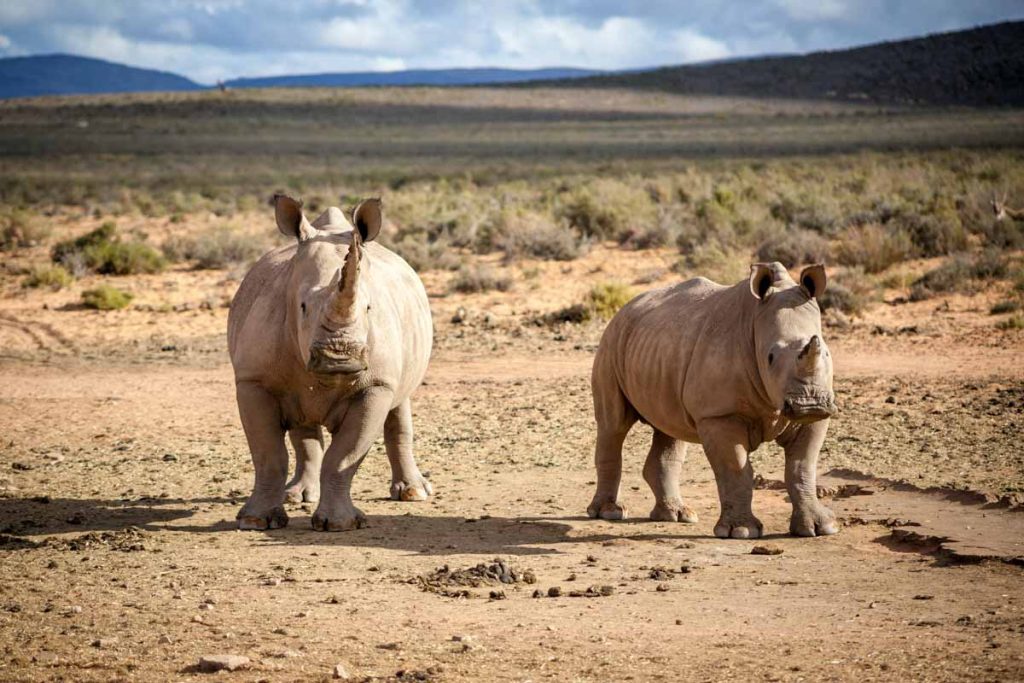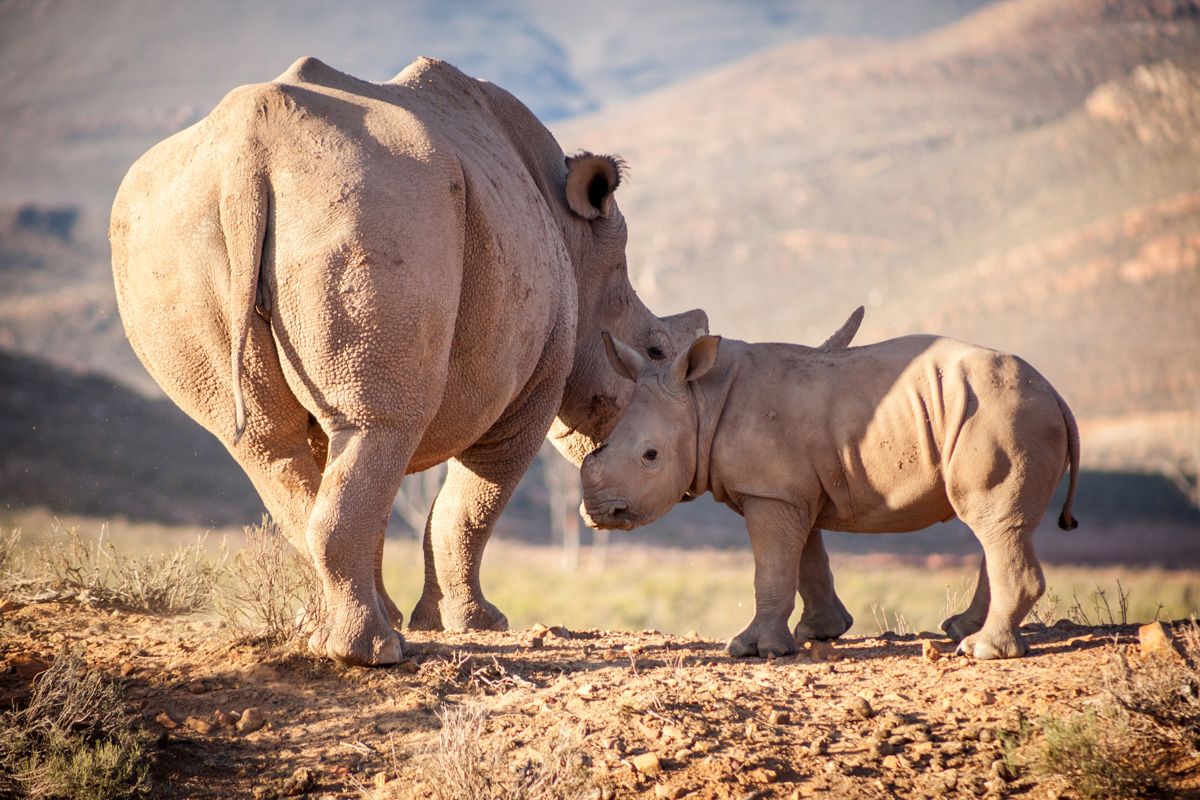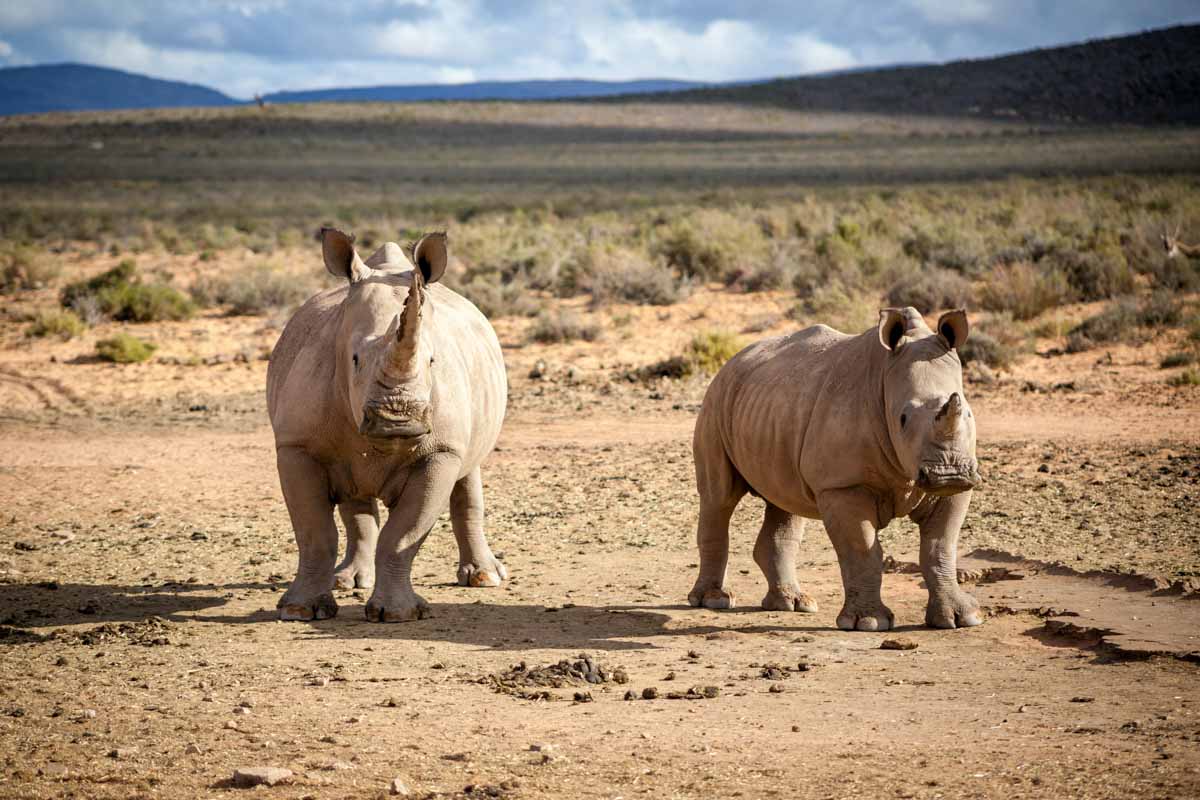For millions of years, rhinos have been iconic inhabitants of Africa’s grasslands and Savannah plains. However, over the past century, poaching, trophy hunting, and misguided beliefs in the medicinal properties of their horns, has driven these magnificent Big 5 animals to the brink of extinction. Yet, rhinos are not just charismatic megafauna; they are keystone species, with an irreplaceable role in preserving Africa’s natural ecosystems and wildlife heritage.
The Importance of Rhinos
In Africa, rhinoceroses stand out as keystone species, playing a pivotal role in upholding the delicate balance of the ecosystem. While all species are ecologically significant, keystone species like rhinos have a unique and outsized impact on their natural environments. In fact, their presence or absence can determine the fate of entire ecosystems.
The grassland habitats of Africa are inherently nutrient-poor, particularly in the soil. This scarcity of nutrients is one reason these areas do not naturally transition into forests. Within these grasslands, various herbivores have adapted to their surroundings. For instance, wildebeest primarily consume the long, nutrient-poor grasses, relying on their specialised digestive systems to extract nourishment from the vegetation. In contrast, animals, like Impala, prefer “sweet grass,” the most nutrient-rich among the savannah’s grasses.
To support concentrations of sweet grass in a given area, the soil must contain a reasonable nutrient content. One of the key contributors to recycling these vital nutrients into the soil is dung. However, in most cases, there is an insufficient concentration of dung in one location due to the small size and far-roaming nature of most antelope and grass-grazing species.
ARC’S Saving Private Rhino Initiative
The Rhino: Africa’s Fertiliser Factories
Here’s where rhinos, especially the white rhino, demonstrate their ecological significance. White rhinos are known for their unique behaviour of defecating in designated spots called “middens”. These middens serve as fixed stations where rhinos not only gather information about their fellow rhinos, but also enrich the soil with a concentrated supply of nutrients. This practice is ideal for the growth of sweet grasses, which depend on higher nutrient levels.
With their dung middens, white rhinos play an irreplaceable role in the African savannah ecosystem, and are pivotal in many other harsh environments, such as the semi-dessert Karoo and delicate Fynbos biome. The presence of rhinos encourages biodiversity, supports the growth of nutrient-rich plants, and helps absorb harmful carbon dioxide from the atmosphere by sustaining Africa’s grassy plains, which naturally act as ‘carbon sinks’.
How Can You Help?
Rhinos are as vital to Africa’s ecosystem as any other species, if not more so. These iconic members of the Big Five deserve the right to exist and flourish in the wild. Saving Private Rhino, in collaboration with ARC, is not just an anti-poaching organisation, it is a commitment to preserving the intricate balance of nature while protecting South Africa’s unique wildlife heritage.




